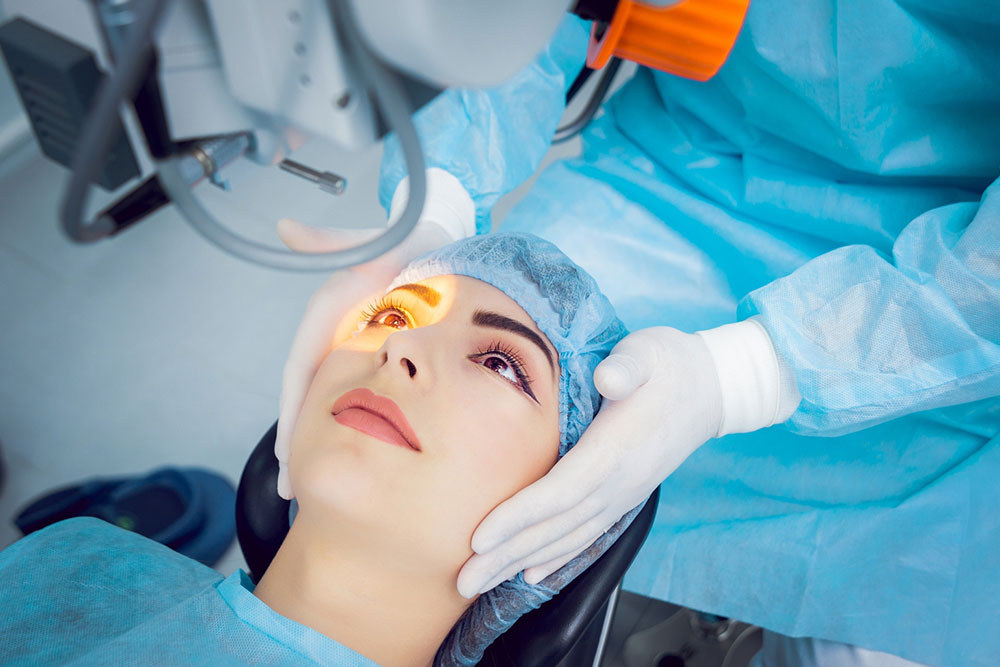Complete Guide to Refractive Eye Surgery: LASIK Innovation, Eligibility, and Cost Insights
LASIK eye surgery offers a safe, effective solution for correcting common vision problems like myopia, hyperopia, and astigmatism. This comprehensive guide outlines eligibility criteria, costs, and insurance options, helping prospective patients make informed decisions. Learn about the procedure, recovery, and how to choose the right clinic to achieve optimal visual outcomes and enjoy greater freedom from glasses and contacts with minimal downtime and high success rates.

Understanding Refractive Eye Surgery: LASIK Procedure, Eligibility Criteria, and Cost Analysis
Refractive eye surgery, specifically LASIK (Laser-Assisted In Situ Keratomileusis), has revolutionized vision correction for millions around the world. Its high success rate and minimal disruption have made it one of the most sought-after elective procedures. Many individuals are now able to reduce or eliminate their dependence on glasses and contact lenses, enjoying clearer vision and greater freedom in daily life. This comprehensive guide delves into what LASIK involves, who qualifies for the procedure, associated costs, insurance considerations, and alternative options for those seeking vision correction. Whether you’re tired of glasses or contacts or considering LASIK for the first time, understanding the nuances is essential for making an informed decision.
What Exactly Is LASIK?
LASIK is a sophisticated laser eye surgery designed to correct common refractive errors such as myopia (nearsightedness), hyperopia (farsightedness), and astigmatism. The procedure involves creating a thin flap in the cornea—the clear, dome-shaped surface of the eye—and then reshaping the underlying corneal tissue with an excimer laser. This reshaping enables the eye to focus light directly onto the retina, significantly improving visual clarity. The entire process is performed with high precision, typically within minutes per eye, and often results in immediate visual improvement. Many patients achieve 20/20 vision or better after LASIK, dramatically reducing the need for glasses or contact lenses.
LASIK effectively addresses the three most common vision issues: myopia, hyperopia, and astigmatism. The primary goal is to redirect incoming light accurately onto the retina, resulting in sharp, clear vision without corrective lenses. Immediately following surgery, some patients might experience mild blurriness, halos, or double vision, but these symptoms usually subside within a few days to weeks. The cornea takes several months to heal fully, and post-operative care—like using prescribed eye drops and avoiding strenuous activities—is crucial for optimal results. The minimally invasive nature of LASIK ensures quick recovery times, allowing patients to return to normal routines relatively swiftly.
Optimal Age for LASIK: Who Should Consider It?
The typical age range for LASIK candidates is over 18, primarily because eye development stabilizes around this stage. It’s essential that refractive errors are stable and not rapidly progressing to ensure the best outcomes. The ideal candidates are usually in their mid-20s to late 20s, although successful procedures are common for patients in their 30s and beyond, provided their eyes are healthy. Age-related changes, such as presbyopia—difficulty focusing on close objects—may not be correctable with LASIK and could necessitate additional procedures or corrective lenses later on. Patients in their 40s and older should have thorough evaluations to determine if LASIK is suitable for their specific needs.
Good overall eye health, free from infections, dry eyes, or corneal abnormalities.
Refractive errors within treatable limits, not exceeding the thresholds established by surgeons.
Stable vision for at least the previous year.
While age provides a guideline, individual assessment plays a critical role. Many adults in their 30s, 40s, and even older successfully undergo LASIK when their eyes are healthy and stable. Your ophthalmologist will perform a comprehensive examination to determine your candidacy based on the health and stability of your eyes.
Understanding the Cost of LASIK Surgery
The price of LASIK can vary significantly based on location, technology used, and the expertise of the surgeon. In major urban centers, the average cost in 2024 might reach around €3,000 per eye, with the overall price depending on several factors. Typically, the cost ranges from €1,050 to €3,000 per eye, with higher-end clinics offering advanced laser technologies, personalized treatment plans, and better aftercare packages. Cutting-edge options like wavefront-guided LASIK or femtosecond laser procedures tend to cost more but may provide better precision and outcomes. It’s essential to compare prices and services before deciding because variations can be substantial depending on the clinic and geographic location.
To ensure you make an informed decision, consider these practical tips:
Collect quotes from multiple clinics and evaluate what services are included.
Seek recommendations from friends, family, or colleagues who have undergone LASIK, to get insights into costs and experience.
Understand the entire recovery process, potential discomfort, and the time frame for visible results.
Research patient reviews and testimonials to assess the quality and reputation of the surgeon and clinic.
Insurance Coverage and LASIK: What You Need to Know
Contrary to some expectations, standard health insurance often does not cover the costs of elective procedures like LASIK. However, many insurance plans cover routine eye examinations and corrective lenses, which can offset related expenses. Some supplementary or specialized vision insurance policies may offer partial reimbursement—potentially up to €500 or more per eye—depending on the provider. It’s vital to review your insurance policy carefully and consult with your provider to understand coverage options. Patients should be prepared to pay the remaining balance out-of-pocket, which varies based on the chosen clinic and technology used. Exploring financing options or payment plans is also advisable to manage costs effectively and make the procedure more accessible.





